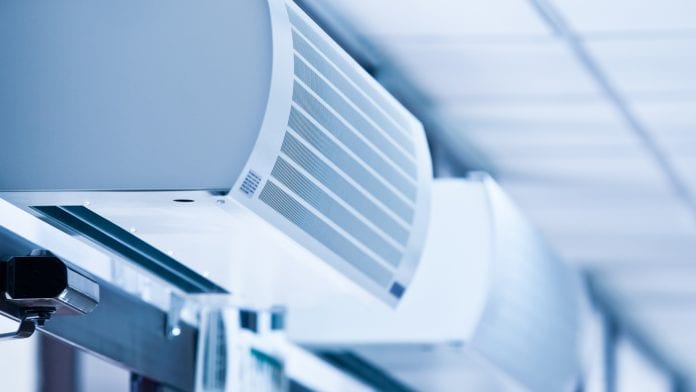
New modelling has suggested that rapid air exchanges can spread COVID-19 in high concentrations from one room to another.
A team of researchers at the US Department of Energy’s Pacific Northwest National Laboratory, including building and heating, ventilation, and air conditioning (HVAC) experts, as well as experts in aerosol particles and viral materials, have used modelling to demonstrate vigorous ventilation can cause spike in viral concentrations.
The findings have been published in the journal Building and Environment.
Ventilation contributes to virus spread
The study suggests that vigorous and rapid air exchanges may contribute to the levels of coronavirus particles in a multiroom building, with particle levels spiking in adjacent rooms within 30 minutes and can remain elevated for up to approximately 90 minutes.
Leonard Pease, lead author of the study, said: “Most studies have looked at particle levels in just one room, and for a one-room building, increased ventilation is always useful to reducing their concentration. But for a building with more than one room, air exchanges can pose a risk in the adjacent rooms by elevating virus concentrations more quickly than would otherwise occur.
“To understand what is happening, consider how secondhand smoke is distributed throughout a building. Near the source, air exchange reduces the smoke near the person but can distribute the smoke at lower levels into nearby rooms. The risk is not zero, for any respiratory disease.”
The team modelled the spread of particles similar to SARS-CoV-2, the virus that causes COVID-19, via air-handling systems and what happens after a person has a five-minute coughing bout in one room of a three-room small office building, running simulations with particles of five microns. They looked at the effects of three factors: different levels of filtration, different rates of outdoor air incorporation into the building air supply, and different rates of ventilation or air changes per hour.
For downstream rooms there was a clear benefit from increasing outdoor air and improving filtering, but the effect of increased ventilation rate was less obvious.
Outdoor air and strong filtration
The team looked at the effects of adding varying amounts of outdoor air to the building air supply, from no outside air to 33% of the building’s air supply per hour.
They found that the incorporation of clean outdoor air reduced transmission risk in the connected rooms, and that replacement of one-third of a building’s air per hour with clean outdoor air in downstream rooms reduced infection risk by about 20% compared to the lower levels of outdoor air commonly included in buildings.
The team noted that the model assumed that the outdoor air was clean and virus free.
The team also studied strong filtration at three different levels, MERV-8, MERV-11, and MERV-13, finding it is also an effective method of reducing transmission of the virus. MERV stands for minimum efficiency reporting value, a common measure of filtration. A higher number translates to a stronger filter.
A MERV-8 filter decreased the peak level of viral particles in connected rooms to just 20% of what it was without filtration. A MERV-13 filter took the peak concentration of viral particles in a connected room down by 93%, less than one-tenth of what it was with a MERV-8 filter. The researchers note that stronger filters have become more common since the pandemic began.
Balancing contributing factors
The researchers were surprised by their finding regarding ventilation – the effect of what researchers call air changes per hour. They discovered that cutting transmission risk in the source room was not necessarily good for connected rooms.
They found that a rapid rate of air exchange, 12 air changes per hour, can cause a spike in viral particle levels within minutes in connected rooms, increasing infection risk in those rooms for a few minutes to more than 10 times what it was at lower air-exchange rates, and which remains for about 20 minutes.
“For the source room, clearly more ventilation is a good thing. But that air goes somewhere,” said Pease. “Maybe more ventilation is not always the solution.
“There are many factors to consider, and the risk calculation is different for each case. How many people are in the building and where are they located? How large is the building? How many rooms? There is not a great deal of data at this point on how viral particles move about in multiroom buildings.
“These numbers are very specific to this model – this particular type of model, the amount of viral particles being shed by a person. Every building is different, and more research needs to be done.”
Co-author Timothy Salsbury, a buildings control expert, said: “Stronger filtration translates to higher energy costs, as does the introduction of more outside air than would usually be used in normal operations. Under many circumstances, the energy penalty for the increased fan power required for strong filtration is less than the energy penalty for heating or cooling additional outside air.
“There are many factors to balance – filtration level, outdoor air levels, air exchange – to minimise transmission risk. Building managers certainly have their work cut out for them.”
The team is now conducting a series of experimental studies along the same lines as the modelling study looking at the effects of filtration, outdoor air incorporation, and air changes.










